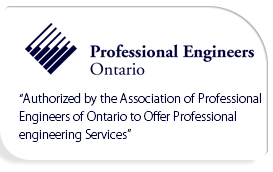SolidWorks Advanced Assembly Modeling Training Course
Course Description: SOLIDWORKS Assembly Modeling training course teaches you how to maximize your use of assembly modeling capabilities of the SOLIDWORKS mechanical design automation software.
SOLIDWORKS Assembly Modeling training runs over a span of two days and covers ten lessons which include advanced mate techniques; top-down assembly modeling; assembly features, smart fasteners and smart components; and assembly editing among others.
SOLIDWORKS Assembly Modeling training course is ideal for users who wish to enhance their skills of assembly modeling.
Course Length: 2 Days
Prerequisites: SOLIDWORKS Essentials
Topics
Introduction
About This Course
Prerequisites
Course Design Philosophy
Using this Book
About the Training Files
Conventions Used in this Book
Windows 7
Use of Color
Graphics and Graphics Cards
Color Schemes
More SOLIDWORKS Training Resources
Local User Groups
Lesson 1: Advanced Mate Techniques
- SOLIDWORKS Assemblies
- Assembly File Structure
- FeatureManager Design Tree
- Opening Assemblies
- File References
- Solving Mates
- Advanced Mate Techniques
- Case Study: Mate Shortcuts
- Mate References
- Design Library Parts
- Capture Mate References
- Multiple Selection Mate References
- Multiple Mate Mode
- Width Free Mate
- Driven Mates
- Copying Multiple Components
- Differences in Mating
- Investigating the Mates
- Fixed Components
- Adding Components
- Copying Components
- Inserting and Mating Simultaneously
- Selection Aids
- The Belt / Chain Assembly Feature
- Slot Mate Constraints
- Profile Center Mate48
- Valid Faces for Profile Center
- Rack Pinion Mate
Lesson 2: Top-Down Assembly Modeling
- Top-Down Assembly
- Making Changes to Dimensions
- Case Study: Editing and Building In-context
- Adding Features In-context
- Indicators of Edit Component
- Appearance of Components While Editing
- Inserting a New Part into an Assembly
- Locating the New Part Component
- Virtual Parts
- Building In-context Features
- Common Tools
- Working Outside the Assembly
- Propagating Changes
- Saving Virtual Parts as External
- In-Context Features
- Update Holders
- External References
- Out of Context
- Putting a Part Back Into Context
- Breaking and Locking External References
- List External References
- External Reference Report
- Machine_Vise Design Intent
- InPlace Mates
- Removing External References
- Why Remove External References?
- Editing to Remove References
- Exercise 6: In-context Features.
- Exercise 7: Top-Down Assembly Modeling
- Exercise 8: Removing External References
Lesson 3: Assembly Features, Smart Fasteners, and Smart Components
- Assembly Features and Smart Fasteners
- Assembly Features
- Case Study: Assembly Features
- Smart Fasteners
- Smart Components
Lesson 4: Assembly Editing
- Assembly Editing
- Key Topics
- Editing Activities
- Replacing and Modifying Components
- Troubleshooting an Assembly
- Replacing Components Using Save As
- Reloading Components
- Component Patterns
Lesson 5: Using Configurations with Assemblies
- Using Configurations with Assemblies
- Case Study: Assembly Configurations
- Creating Configurations Manually
- Configuration Properties
- Using the Modify Configurations Dialog
- Changing Configurations using the Context Toolbar
- Managing the Tree Display
- Assembly Evaluation Tools
- Controlling Dimensions in an Assembly
- Global Variables
- Equations With Functions
- Comments
- Sensors
- Using the Mate Controller
Lesson 6: Display States and Appearances
- Display States
- Bulk Selection Tools
- Case Study: Display States
- Advanced Select
- Envelopes
- Appearances, Materials and Scenes
Lesson 7: Large Assemblies
- Large Assemblies
- Key Topics
- Lightweight Components
- Large Assembly Mode
- Using SpeedPak
- Using Configurations with Large Assemblies
- Defeature
- Modifying the Structure of an Assembly
- Assembly Visualization
- Large Design Review
- Drawing Considerations
Lesson 8: Facility Layout
- Facility Layout
- Publishing an Asset
- Using Magnetic Mates
- Modeling Connection Point Geometry
Lesson 9: Using SOLIDWORKS Treehouse
- SOLIDWORKS Treehouse
- Setting Treehouse Instances
- Setting Configurations in Treehouse
- Exporting Treehouse Data
Lesson 10: Layout-based Assembly Design
- Layout-based Assembly Design
- Blocks
- Inserting Blocks
- Creating a Part from a Block
- Gear and Pulley Motion in Blocks



